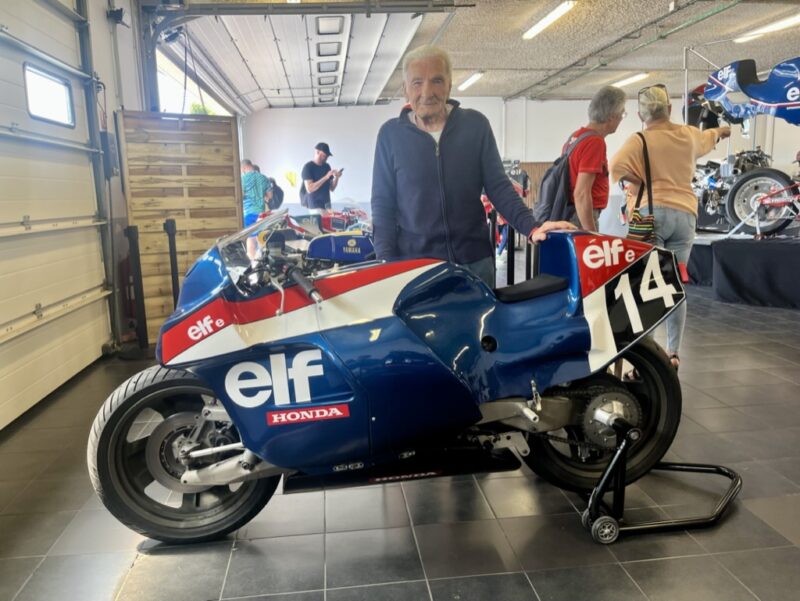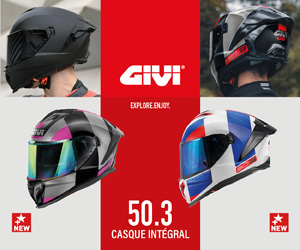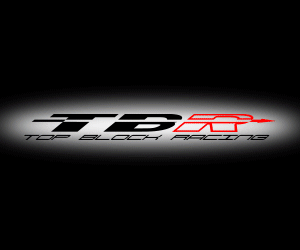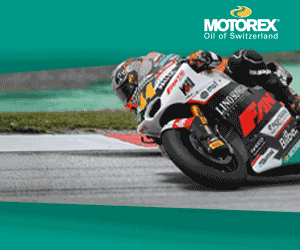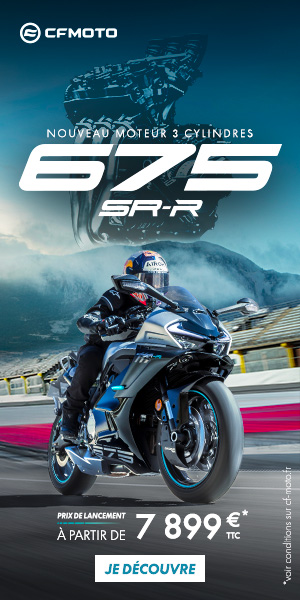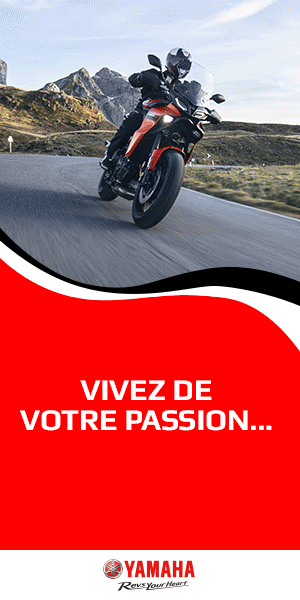In nearly 75 years of Grand PrixMany attempts were made to stand out. France, as is often the case, was not to be outdone when it came to the most unusual experiments, and a host of engineers from the country tried, with varying degrees of success, to modify motorcycle design. This is the case of André de Cortanze and Elf; a unique French saga that evokes the spirit of the 1980s.
De Cortanze was not short of work at the end of the 1970sA graduate of INSA, then hired by Renault to develop F2 and F3, he is undoubtedly one of the most promising minds of his generation. He became project manager at Renault in 1977, and focused on the newly designed turbocharged Formula 1 car, partly developed thanks to the expertise of the late Jean-Pierre Jabouille.
At the same time, Elf, a major French oil company, is very present in the world of motor sports, and features prominently on the bodywork of the Renault RS-01. Elf in no way neglects the world of motorcycles, which leads to the birth of a common idea; why not try to produce an innovative, and above all, competitive machine?
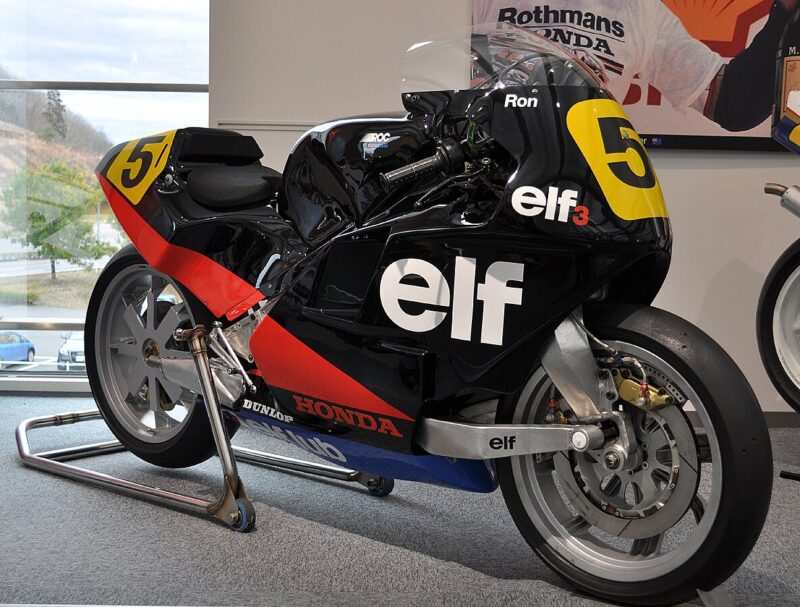
The Elf 3, one of the… atypical motorcycles.
De Cortanze, a motorcycle enthusiast, was on the case, accompanied by illustrator Daniel Trema. He couldn't help but notice the lack of innovation in the motorcycling world, compared to Formula 1, which had changed considerably since the 1950s. The fork and tubular frames were principles of another era, which, in his opinion, were largely obsolete. In February 1978, A UFO makes an appearance: the Elf X.
The first strange thing is that there's no longer a frame, and It is the engine itself that ensures rigidity A 750cc liquid-cooled Yamaha. Out with the fork, replaced by a double wishbone suspension and a lever and linkage system for steering. The center of gravity is as low as possible, because the fuel tank is under the engine! It's Michel Rougerie who is tasked with developing it, but the first tests are not so conclusive.
In 1980, Honda showed interest in the ambitious project, and joined the adventure by supplying engines for the Elf. The Elf e 1000cc four-stroke, designed for endurance, appears.Even though the machine looks more like what we're used to seeing on the track, the innovations it incorporates are impressive upon closer inspection. Four-spoke wheels, carbon fiber disc brakes, a rear sprocket positioned opposite the swingarm (which is also made of cast magnesium), an automotive steering column… it leaves no one indifferent at every level. Unfortunately, too many mechanical problems are weighing down the project. Equipped with special fairings, It became the Elf R some time later, and broke many world records on the Nardo track.
Endurance racing now limited engine displacement to 500cc, so it made sense to compete in Grand Prix racing. In 1984, De Cortanze presented the Elf 2, equipped with a Honda V3 engine producing 120 horsepower. However, the Marzocchi damping system rendered the first version undrivable, and it was soon replaced by the Elf 2A. Again, the steering and the integration of a complex suspension system made it difficult to use.The Elf 2B and Elf 2C, notably developed by Christian Le Liard, do not provide any more satisfaction.but they are always offering more new solutions.
The year 1986 marks a turning point in the epic. De Cortanze goes to Peugeot-Talbot Sport to work on the 205 T16 rally carSerge Rosset, another highly talented Frenchman, is taking on a more prominent role within the team he's been working with for several years. He presents the Elf 3, which is a significant departure from previous prototypes. With its high-mounted fuel tank, it looks more like other Grand Prix motorcycles. On the rider front, Briton Ron Haslam is on board; he wins the Macau Grand Prix with it and performs admirably in the World Championship, finishing 9th overall in 1986. Honda has a great deal of respect for the French team. Thus, Trema became the first foreigner to work in the firm's design offices.
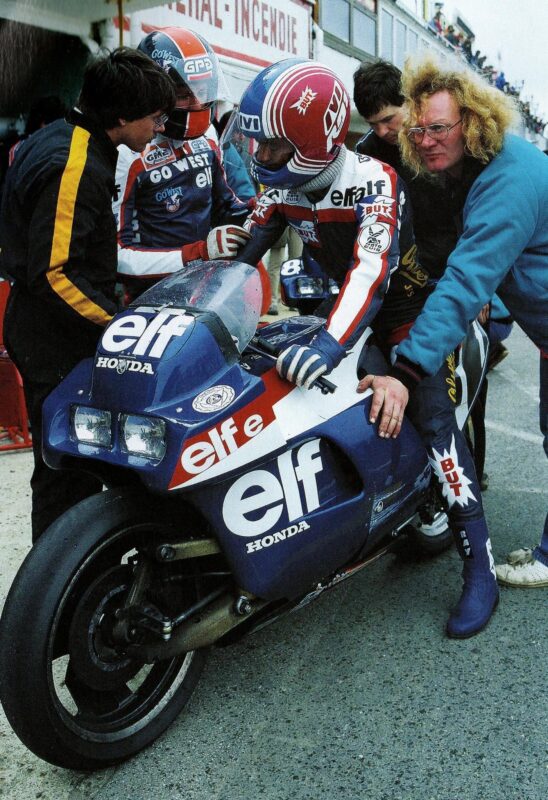
The Elf (lowercase), a strange prototype.
In 1987, Haslam rode the Elf 4, but too late to draw any meaningful conclusions. The NSR500 V4 engine arrived late, and once again, the model encountered problems. For a time, there was consideration of creating a completely new carbon fiber fairing, but the idea was abandoned. The introduction of the Elf 5 in 1988, the last of its name, changed little. Admittedly, Honda supplies Nissin calipers to address these recurring braking problems, but it makes no difference.Haslam's performance is not insignificant despite his health problems, but it's difficult to speak of success given his 11th place finish in the championship. In total, no fewer than 18 patents were filed; many were sold to Honda, which used them for road-going models.
Finally, it's not quite over! Serge Rosset, determined, took up the project again in the mid-1990s. The Elf 500 was being prepared in the ROC workshops in Annemasse. Unusually, the motorcycle was entirely European, with the exception of the pistons and brakes. The engine was a Swissauto design. conceived by sidecar legend Rolf Biland. It's a 500cc V4 with a very wide angle (108°) that delivers a lot of power. Sponsored by Pepsi, it struggles to compete with its rivals in Grand Prix racing due to its convoluted setup.
It's better in 1997, with Jürgen Fuchs at the handlebars. The German even finished 6th in Brazil, a convincing result. When Elf abandoned the project, Kenny roberts shows interest in taking it over, and the name changes to MuZ. For the 1998 season, the prototype remains unchanged and is no more competitive, even in its new colors. The following year, a clean slate is used. The ROC is abandoned because the chassis frustrated the drivers, starting with Eskil Suter, who was in charge of testing. Then, Biland takes over the team, now " Team Biland GP1 The 1999 Muz-Weber is very high-performing; the "Flying Dutchman" Jurgen van den Goorbergh even takes two pole positions riding it!
At the end of the year, a lack of resources forced the team to cease operations. But that wasn't the end of it! Dave Stewart, former team manager of BSL Racing, bought the MuZ 500 with Swissauto engine. The Pulse 500 (its new name) entered the 2001 season, driven by Jason Vincent and Mark Willis. A lack of results, coupled with insufficient funding, forced the team to withdraw mid-season. That was the end of Elf, and its successors.
Did you know this story? Tell me in the comments!
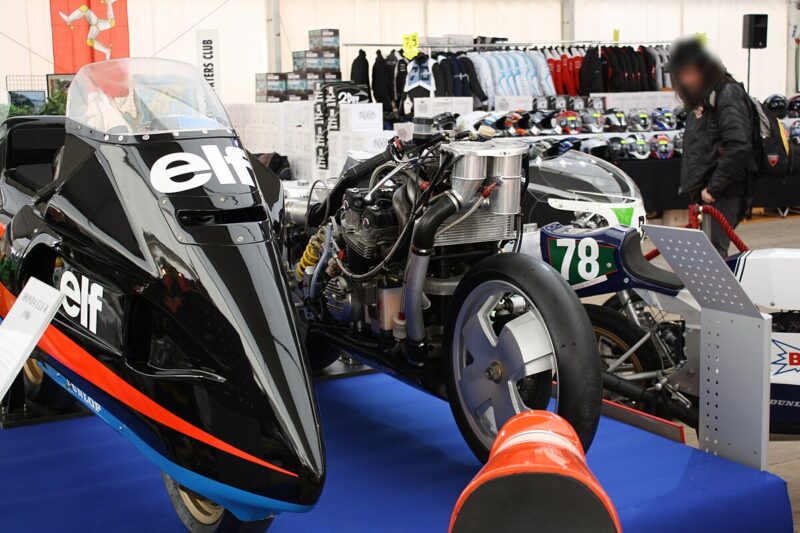
On the left, the Elf R aerodynamics.
Cover photo: Sunday Ride Classic 2024












